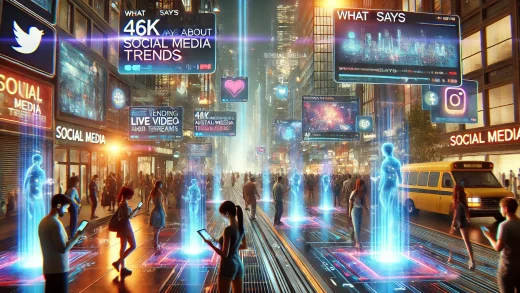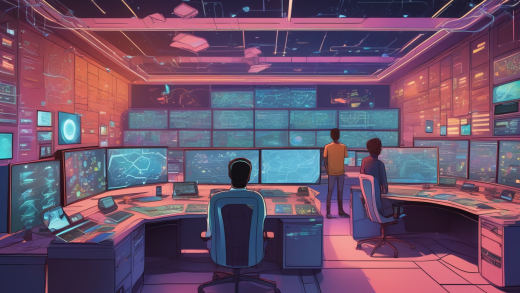Education has always been a cornerstone of societal progress, evolving from oral traditions to formal institutions, and now into the digital age. With the rise of artificial intelligence (AI), education faces its most transformative moment yet. AI-driven tools are reshaping classrooms, personalizing learning, and automating administrative tasks. But this raises a crucial question: Will AI replace teachers, or will it become their most powerful ally? Let’s explore the evolving role of AI in education and its implications for teachers and students.
1. AI as a Tool, Not a Replacement
AI is revolutionizing education by automating repetitive tasks and providing personalized learning experiences. However, teaching is more than delivering information—it’s about fostering understanding, critical thinking, and emotional growth.
How AI Enhances Education
| Function | AI’s Role |
|---|---|
| Personalized Learning | Adaptive systems like Duolingo tailor lessons to individual progress. |
| Administrative Tasks | Tools like Grammarly and plagiarism checkers reduce teachers’ workload. |
| Student Engagement | Interactive platforms like Kahoot and Quizlet make learning fun. |
While AI excels in these areas, it lacks the empathy and contextual understanding that human teachers bring to the classroom.
2. The Human Element: What AI Can’t Replace
Teachers are not just dispensers of knowledge; they are mentors, role models, and emotional supporters. AI, despite its capabilities, cannot replicate these uniquely human qualities.
Key Roles of Teachers
- Emotional Support: Teachers identify and address students’ emotional and social needs, something AI cannot fully comprehend.
- Critical Thinking: Teachers guide students in analyzing complex problems and developing original ideas, which goes beyond AI’s scope.
- Cultural Sensitivity: Education requires understanding cultural nuances and values, which AI systems often lack.
AI might handle routine tasks efficiently, but the heart of education lies in human connection—a role only teachers can fulfill.
3. Potential Challenges of AI in Education
Integrating AI into education comes with its own set of challenges that must be addressed to ensure it complements rather than disrupts the learning process.
Challenges of AI Integration
- Digital Divide: Unequal access to technology can widen educational gaps.
- Bias in AI Systems: Algorithms may perpetuate biases, disadvantaging certain groups.
- Dependence on Technology: Over-reliance on AI tools might hinder the development of independent thinking skills.
4. A Collaborative Future: Teachers and AI Together
The most promising path forward is a collaboration where AI empowers teachers rather than replacing them. AI can handle data-driven tasks, leaving teachers with more time to focus on personalized instruction and relationship-building.
How Teachers and AI Can Collaborate
- AI-Driven Insights: Teachers can use AI analytics to identify struggling students and tailor their teaching strategies.
- Efficient Planning: AI tools can automate lesson planning and grading, freeing up teachers for meaningful interactions.
- Global Learning: AI-powered platforms can bring diverse resources to classrooms, enriching the learning experience.
5. Conclusion: The Teacher’s Role in an AI-Driven Classroom
AI is undoubtedly a game-changer in education, but it is not a replacement for teachers. Instead, it serves as a tool to enhance the educational process. The future of education lies in a partnership where teachers bring empathy, creativity, and guidance, while AI provides efficiency, scalability, and personalized learning.
What We Can Do:
- Invest in Training: Equip teachers with the skills to integrate AI effectively into their teaching.
- Ensure Equity: Close the digital divide to make AI tools accessible to all students.
- Focus on Ethics: Develop AI systems that respect cultural diversity and eliminate bias.
As we move forward, it’s crucial to remember that education is more than just information transfer; it’s about shaping minds and building futures. And for that, the human touch remains irreplaceable.
FAQ: AI and Education
Q: Can AI replace teachers entirely?
A: No, AI can assist with tasks like grading and personalized learning, but it cannot replace the emotional and intellectual connection teachers have with students.
Q: How does AI improve learning?
A: AI personalizes lessons, provides instant feedback, and automates repetitive tasks, making education more efficient and accessible.
Q: What are the risks of AI in education?
A: Risks include widening the digital divide, perpetuating biases, and reducing opportunities for critical thinking if overused.
Q: How can teachers benefit from AI?
A: AI can save time on administrative tasks, offer insights into student performance, and provide innovative teaching resources.
Q: What is the future of education with AI?
A: A collaborative future where AI supports teachers in delivering a more personalized, inclusive, and engaging learning experience.


